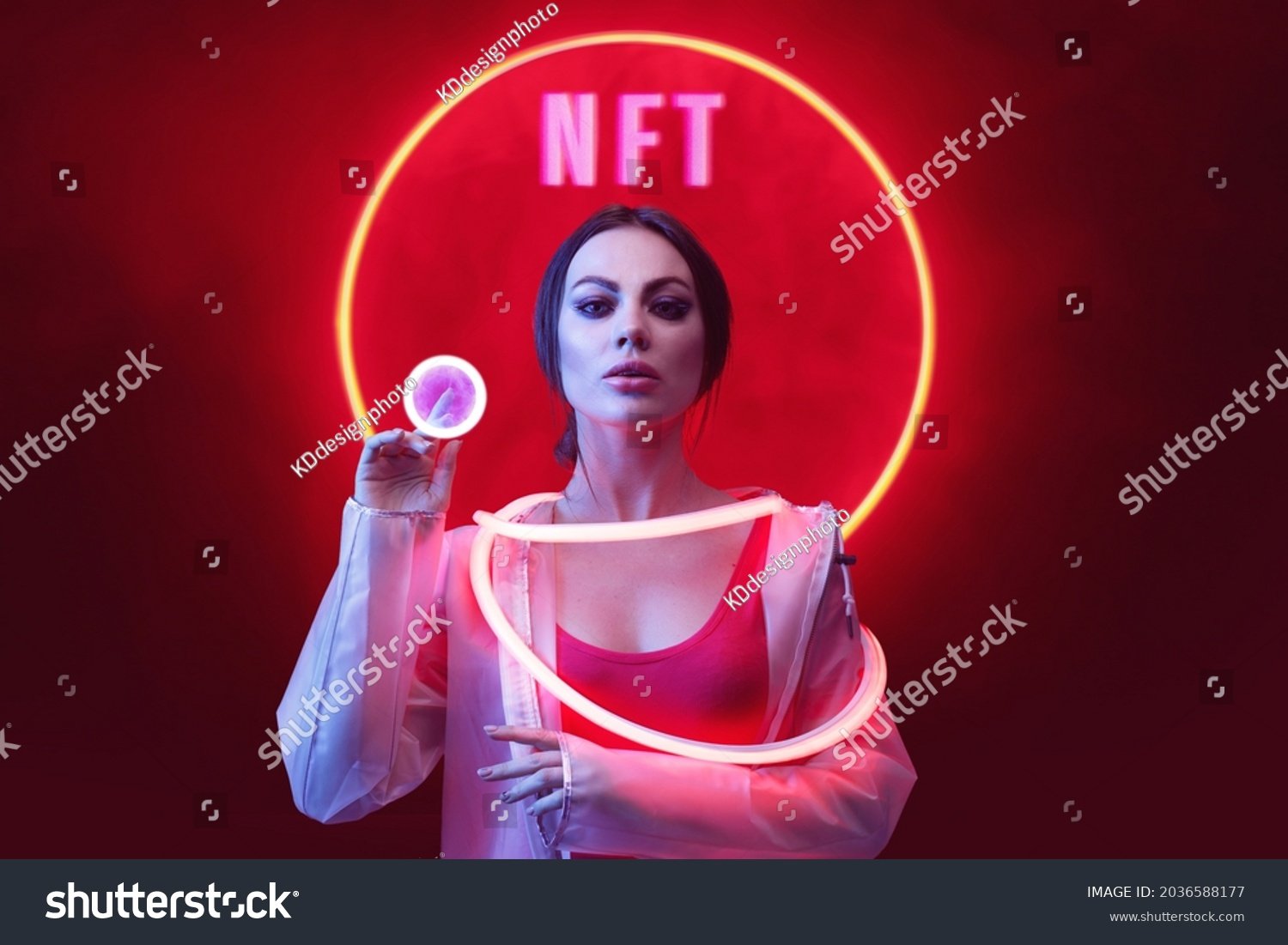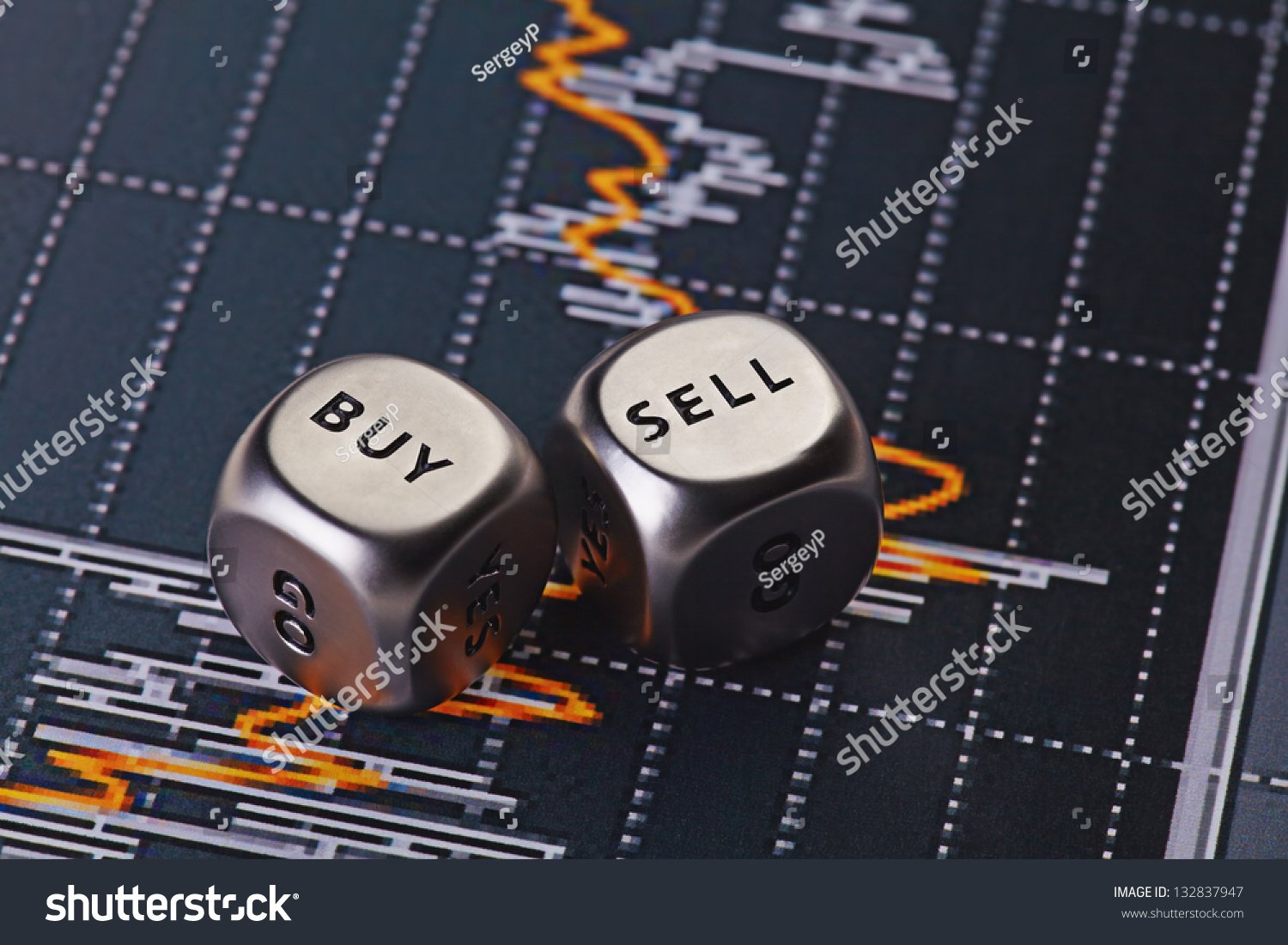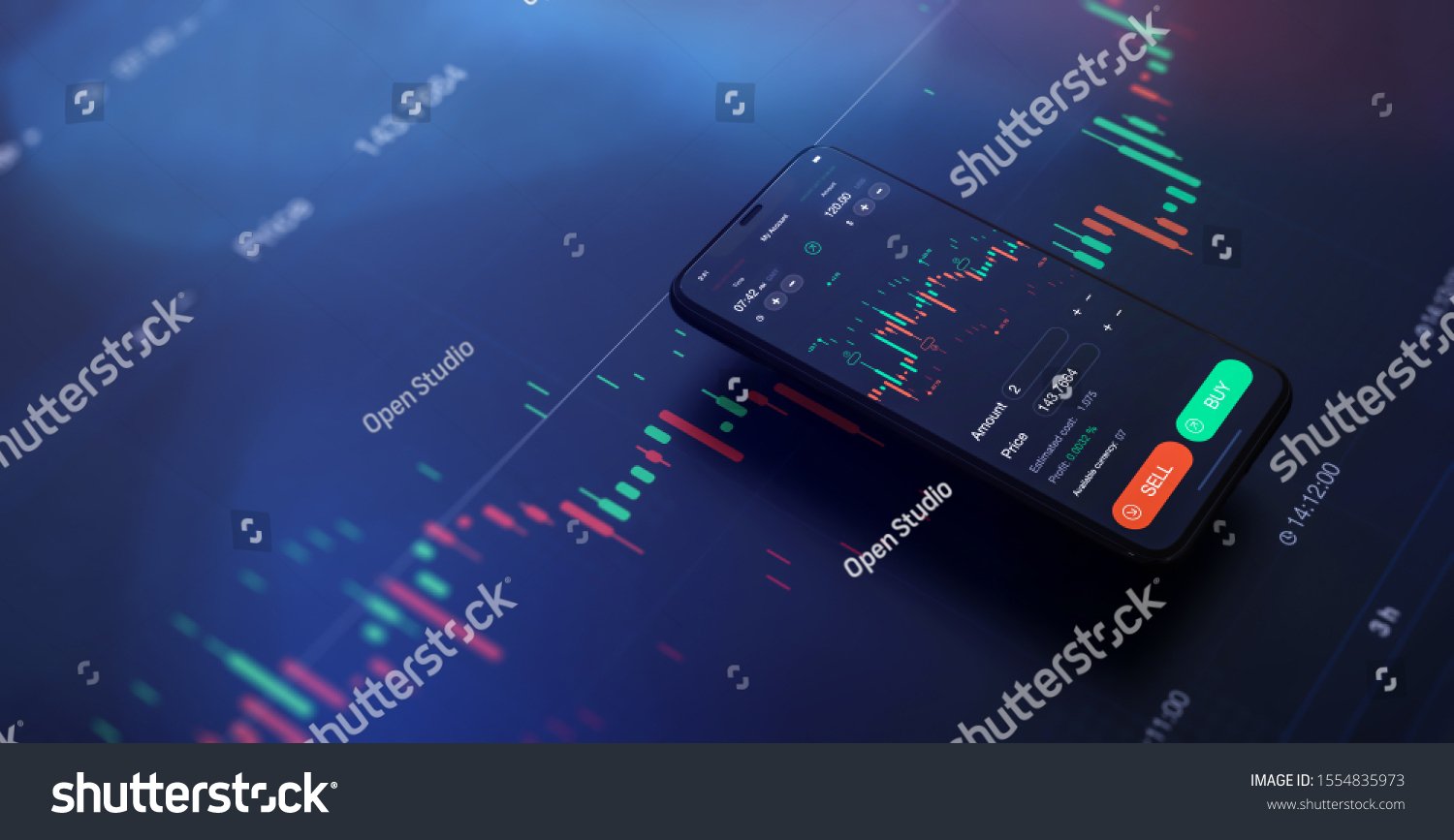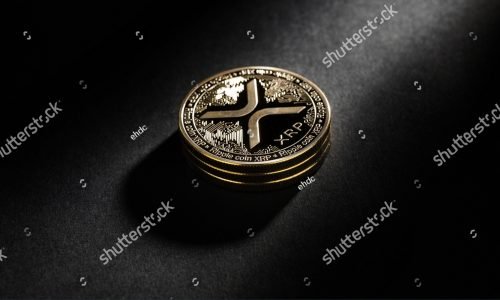The Rise of NFTs and Memecoins: Cultural and Financial Impact Introduction The world of cryptocurrency has seen many innovations, but few have captured the public’s imagination quite like non-fungible tokens (NFTs) and memecoins. These digital assets have not only introduced new financial opportunities but also created cultural phenomena that resonate far beyond the tech-savvy community. This article explores the emergence of NFTs and memecoins, their cultural and financial impacts, and their implications for the future. Understanding NFTs Non-fungible tokens (NFTs) are unique digital assets verified using blockchain technology. Unlike cryptocurrencies such as Bitcoin or Ethereum, which are interchangeable and have the same value, each NFT is one-of-a-kind and cannot be exchanged on a one-to-one basis. NFTs can represent various digital items, including art, music, videos, virtual real estate, and collectibles. Key Characteristics of NFTs: Uniqueness: Each NFT has a distinct value and is identifiable by a unique identifier on the blockchain. Ownership: NFTs provide verifiable proof of ownership and authenticity, making them ideal for digital collectibles and art. Indivisibility: NFTs cannot be divided into smaller units and must be bought, sold, or held as a whole. The Popularity of NFTs The rise of NFTs began in earnest around 2020 and exploded in 2021, fueled by high-profile sales and celebrity endorsements. Digital artists, musicians, and creators found a new way to monetize their work directly, bypassing traditional intermediaries. Milestones and Key Events: Beeple’s “Everydays: The First 5000 Days”: This digital artwork sold for $69 million at Christie’s auction house, bringing mainstream attention to NFTs. NBA Top Shot: A platform for buying, selling, and trading officially licensed NBA collectible highlights, generating millions in sales. CryptoPunks and Bored Ape Yacht Club: Collections of unique, algorithmically generated characters that became status symbols within the crypto community. Popular NFT Platforms: OpenSea: One of the largest NFT marketplaces, supporting a wide range of digital assets. Rarible: A decentralized marketplace where users can create and sell NFTs. Foundation: A platform focused on digital art, connecting artists with collectors. Memecoins: A New Trend in Cryptocurrency Memecoins are a subcategory of cryptocurrencies inspired by internet memes and pop culture. They often start as jokes or parodies but can gain significant value and popularity due to their community-driven nature and viral marketing. Characteristics of Memecoins: Community-Driven: Memecoins thrive on social media buzz and community engagement. Volatility: Their value can be highly volatile, driven by hype, speculation, and market sentiment. Accessibility: Memecoins are often priced low, making them accessible to a broad audience. Popular Memecoins: Dogecoin (DOGE): Initially created as a joke based on the “Doge” meme, Dogecoin gained mainstream attention, especially after endorsements from celebrities like Elon Musk. Shiba Inu (SHIB): Dubbed the “Dogecoin killer,” Shiba Inu gained popularity as another meme-based cryptocurrency with a vibrant community. Cultural Impact of NFTs and Memecoins NFTs and memecoins have significantly influenced digital culture, art, and entertainment: Digital Art Revolution: NFTs have democratized the art world, allowing digital artists to gain recognition and monetize their work without traditional gatekeepers. Pop Culture Integration: Memecoins and NFT projects have been integrated into various aspects of pop culture, including music, sports, and entertainment. New Forms of Community: Both NFTs and memecoins have fostered tight-knit, passionate communities that drive their success and adoption. Financial Implications While the cultural impact is substantial, NFTs and memecoins also present new financial opportunities and risks: Investment Opportunities: Many view NFTs and memecoins as speculative investments, hoping to profit from their appreciation in value. Market Dynamics: The prices of NFTs and memecoins can be highly volatile, influenced by trends, celebrity endorsements, and market sentiment. Risks and Challenges: The speculative nature of these assets poses significant risks, including the potential for market bubbles and regulatory scrutiny. Conclusion The rise of NFTs and memecoins has brought about a significant cultural and financial shift in the cryptocurrency landscape. These digital assets have opened new avenues for creativity, community building, and investment, though they also come with inherent risks and challenges. As the market for NFTs and memecoins continues to evolve, their impact on both the digital economy and popular culture is likely to grow. Whether seen as groundbreaking innovations or speculative fads, NFTs and memecoins have undeniably left a lasting mark on the world of cryptocurrency and beyond.
XRP Ledger
XRPL: The Versatility of Federated Byzantine Agreement in Blockchain Introduction The XRP Ledger (XRPL) stands out in the crowded field of blockchain technologies due to its unique consensus algorithm, the Federated Byzantine Agreement (FBA). Developed by Ripple Labs, XRPL aims to provide a fast, scalable, and efficient platform for financial transactions. This article explores the XRPL’s history, its underlying FBA consensus mechanism, and its diverse applications in the blockchain ecosystem. What is XRPL? The XRP Ledger (XRPL) is an open-source, decentralized blockchain platform designed to facilitate fast and low-cost international payments. It was developed by Ripple Labs, a technology company focused on improving global financial transactions. XRPL uses its native digital currency, XRP, as a bridge currency for cross-border payments, enabling liquidity and reducing transaction costs. XRPL’s key features include: Speed: Transactions are settled in just a few seconds. Cost: Transaction fees are extremely low, making it suitable for micropayments. Scalability: The network can handle a high volume of transactions per second. Federated Byzantine Agreement (FBA) Explained The Federated Byzantine Agreement (FBA) is a consensus algorithm used by XRPL to achieve agreement among network participants. Unlike Proof-of-Work (PoW) or Proof-of-Stake (PoS) systems, FBA relies on a decentralized network of validators that work together to validate transactions and maintain the integrity of the ledger. Key principles of FBA include: Quorum Slices: Each validator chooses a set of other validators it trusts, forming a “quorum slice.” Consensus is reached when there is sufficient overlap among these quorum slices. Decentralization: Validators operate independently and are spread across different geographical locations and institutions, ensuring decentralization and security. Efficiency: FBA allows for quick and efficient consensus without the need for intensive computational work, as seen in PoW systems. Use Cases of FBA in XRPL The versatility of the FBA consensus model enables XRPL to support a wide range of applications beyond simple payments: Cross-Border Payments: XRPL facilitates fast and cost-effective international money transfers, making it ideal for remittances and global commerce. Tokenization: Users can issue and trade tokens representing various assets, including fiat currencies, commodities, and even real estate, on the XRPL. Decentralized Finance (DeFi): XRPL supports DeFi applications that provide financial services like lending, borrowing, and trading in a decentralized manner. Micropayments: The low transaction fees and high speed of XRPL make it suitable for micropayments, enabling new business models for content creators and service providers. Security and Efficiency of XRPL The FBA consensus mechanism ensures the security and efficiency of the XRPL network: Security: The decentralized nature of FBA and the use of quorum slices make it resistant to attacks. Validators must reach a consensus on the validity of transactions, making it difficult for malicious actors to manipulate the ledger. Efficiency: FBA does not require intensive computational work, resulting in lower energy consumption and faster transaction processing times compared to PoW-based systems. Challenges and Future of XRPL Current Challenges: Regulatory Uncertainty: The legal status of XRP and the regulatory environment for cryptocurrencies remain uncertain in many jurisdictions, posing challenges for widespread adoption. Competition: XRPL faces competition from other blockchain platforms and emerging technologies, requiring continuous innovation to stay ahead. Future Developments: Interoperability: Enhancements in interoperability with other blockchain networks could expand XRPL’s use cases and adoption. Scalability Solutions: Ongoing research and development aim to further improve the scalability and performance of the XRPL network. Conclusion The XRP Ledger, with its Federated Byzantine Agreement consensus mechanism, offers a versatile and efficient platform for a wide range of blockchain applications. From cross-border payments to tokenization and DeFi, XRPL’s unique features make it a valuable asset in the blockchain ecosystem. As the technology continues to evolve and address current challenges, XRPL is poised to play a significant role in the future of decentralized finance and digital transactions. Its innovative approach to consensus and its focus on real-world use cases make XRPL a promising platform with substantial potential for growth and impact.
Ethereum
Ethereum: Unlocking the Potential of Blockchain with Smart Contracts Introduction While Bitcoin introduced the world to the concept of decentralized digital currency, Ethereum has taken blockchain technology to new heights by enabling programmable applications through smart contracts. Created by Vitalik Buterin in 2015, Ethereum is a decentralized platform that allows developers to build and deploy decentralized applications (DApps) using its native cryptocurrency, Ether (ETH). This revolutionary approach has expanded the possibilities of blockchain beyond simple transactions, paving the way for a wide range of innovative use cases. What is Ethereum? Ethereum is a decentralized, open-source blockchain platform designed to support the creation and execution of smart contracts and decentralized applications. Unlike Bitcoin, which primarily functions as a digital currency, Ethereum provides a versatile platform where developers can build and deploy various applications without the need for a centralized authority. Vitalik Buterin, a Russian-Canadian programmer, proposed Ethereum in late 2013 with the goal of creating a more versatile blockchain platform. Ethereum officially launched in July 2015, and since then, it has grown to become the second-largest cryptocurrency by market capitalization, attracting a vibrant community of developers and innovators. Smart Contracts: The Game Changer Smart contracts are self-executing contracts with the terms of the agreement directly written into code. These contracts automatically execute and enforce the terms of an agreement when predefined conditions are met, eliminating the need for intermediaries and reducing the risk of fraud. Smart contracts are the cornerstone of Ethereum’s innovation, enabling a wide range of applications across various industries: Finance: Decentralized Finance (DeFi) applications offer financial services such as lending, borrowing, and trading without traditional banks. Supply Chain Management: Smart contracts enhance transparency and efficiency by automating and verifying transactions across the supply chain. Gaming and Entertainment: Developers create games and virtual worlds where in-game assets and interactions are governed by smart contracts. Real Estate: Property transactions and ownership records can be managed and verified through smart contracts, reducing paperwork and increasing transparency. Ethereum Virtual Machine (EVM) The Ethereum Virtual Machine (EVM) is a decentralized computing environment that runs smart contracts. The EVM enables developers to write and deploy code on the Ethereum network using programming languages like Solidity. It ensures that smart contracts execute exactly as programmed, without the possibility of downtime, censorship, fraud, or third-party interference. The EVM’s ability to execute arbitrary code has led to the creation of a diverse ecosystem of DApps, ranging from financial services to social networks, all running on the Ethereum blockchain. Decentralized Applications (DApps) Decentralized applications, or DApps, are applications that run on a blockchain network rather than a centralized server. Ethereum’s support for smart contracts makes it an ideal platform for building DApps, which can operate without a central point of control and are often governed by their users. Some popular DApps on the Ethereum network include: Uniswap: A decentralized exchange for trading cryptocurrencies without intermediaries. MakerDAO: A decentralized lending platform that allows users to borrow and lend digital assets. Cryptokitties: A blockchain-based game where players can collect, breed, and trade virtual cats. Challenges and Future of Ethereum Current Challenges: Scalability: The Ethereum network can handle a limited number of transactions per second, leading to congestion and high transaction fees during periods of high demand. Energy Consumption: Similar to Bitcoin, Ethereum’s current Proof-of-Work (PoW) consensus mechanism requires significant computational power and energy. Future Developments: Ethereum 2.0: A major upgrade designed to address scalability and energy efficiency. Ethereum 2.0 will transition the network from PoW to Proof-of-Stake (PoS), significantly reducing energy consumption and increasing transaction throughput. Layer 2 Solutions: Technologies like rollups and sidechains aim to improve scalability by processing transactions off the main Ethereum chain. Conclusion Ethereum has revolutionized the blockchain space by introducing smart contracts and enabling the development of decentralized applications. Its versatile platform has inspired a wave of innovation, transforming industries and creating new possibilities for decentralized technologies. As Ethereum continues to evolve with upgrades like Ethereum 2.0, it promises to overcome current challenges and unlock even greater potential for blockchain applications. The future of Ethereum is bright, with its impact on the digital economy likely to grow as more developers and businesses embrace its capabilities.
Bitcoin
Bitcoin: The Pioneer of Cryptocurrency and the Power of Proof-of-Work Introduction In the ever-evolving landscape of digital finance, Bitcoin stands as a revolutionary force, marking the dawn of a new era in the world of currency and transactions. Created by the pseudonymous Satoshi Nakamoto in 2008, Bitcoin introduced the world to the concept of a decentralized digital currency, free from the control of central banks and governments. At the heart of Bitcoin’s innovation lies the blockchain, a groundbreaking technology that ensures transparency, security, and immutability in transactions. What is Bitcoin? Bitcoin is a decentralized digital currency that allows peer-to-peer transactions over the internet without the need for intermediaries like banks. Satoshi Nakamoto’s white paper, “Bitcoin: A Peer-to-Peer Electronic Cash System,” laid the foundation for this groundbreaking concept. Since its inception, Bitcoin has grown from a niche interest among cryptography enthusiasts to a global phenomenon, influencing financial markets, technology, and even cultural paradigms. Bitcoin’s core features include its limited supply, with only 21 million coins ever to be mined, and its pseudonymous nature, allowing users to transact without revealing their identities. These characteristics make Bitcoin a unique asset, often compared to digital gold due to its scarcity and store of value properties. Understanding Blockchain Technology Blockchain is the underlying technology that powers Bitcoin. It is a decentralized, distributed ledger that records all transactions across a network of computers. Each block in the blockchain contains a list of transactions and a reference to the previous block, forming a chain that is virtually immutable once recorded. The transparency and security of blockchain come from its decentralized nature. Instead of a single central authority, the blockchain is maintained by a network of nodes, each holding a copy of the entire ledger. This decentralization ensures that no single entity can alter the transaction history, providing a high level of security against fraud and tampering. Proof-of-Work (PoW) Explained Proof-of-Work (PoW) is the consensus algorithm used by Bitcoin to secure its network and validate transactions. In a PoW system, miners compete to solve complex mathematical puzzles, with the first to solve the puzzle earning the right to add a new block to the blockchain. This process, known as mining, requires significant computational power and energy, making it costly and resource-intensive. The puzzle-solving nature of PoW ensures that adding a new block to the blockchain requires effort and investment, deterring malicious actors from attempting to manipulate the system. Additionally, the difficulty of these puzzles adjusts over time to ensure that blocks are added at a consistent rate, roughly every 10 minutes in the case of Bitcoin. Advantages and Challenges of PoW Advantages: Security: PoW provides a high level of security, as altering the blockchain would require an immense amount of computational power, making attacks impractical. Decentralization: The distributed nature of mining prevents any single entity from gaining control over the network. Transparency: All transactions are publicly recorded on the blockchain, ensuring transparency and traceability. Challenges: Energy Consumption: Mining requires substantial energy, leading to environmental concerns and high operational costs. Scalability: The time and resources needed to mine blocks can limit the number of transactions processed per second, posing scalability issues. Centralization Risk: Over time, mining has become dominated by large mining pools and specialized hardware, potentially leading to centralization of power. Conclusion Bitcoin’s introduction of blockchain technology and the Proof-of-Work consensus algorithm has revolutionized the concept of digital currency, providing a secure, transparent, and decentralized alternative to traditional financial systems. Despite its challenges, Bitcoin remains a pioneering force in the cryptocurrency landscape, continually influencing technological advancements and financial innovations. As the first and most well-known cryptocurrency, Bitcoin has set the stage for countless other digital assets and blockchain projects, each building on its foundational principles. The future of Bitcoin and blockchain technology holds immense potential, promising to reshape industries, economies, and the way we perceive and utilize money.
Fundamental Analysis in Forex: Reading Economic Indicators
Fundamental Analysis in Forex: Reading Economic Indicators Nationwide – January 2, 2024 (News.com) : Fundamental analysis is a crucial aspect of Forex trading, focusing on the economic, social, and political forces that influence currency prices. By understanding and interpreting these factors, traders can make informed decisions about potential market movements. What is Fundamental Analysis? Fundamental analysis involves examining economic indicators, news events, and geopolitical developments to predict future currency movements. This method contrasts with technical analysis, which relies on historical price data and chart patterns. Key Economic Indicators Several economic indicators significantly impact currency values. Here are some of the most important ones to monitor: Gross Domestic Product (GDP): Measures the total economic output of a country. A growing GDP typically strengthens a currency, while a declining GDP weakens it. Unemployment Rate: Indicates the percentage of the labor force that is unemployed. Higher unemployment rates generally lead to a weaker currency. Inflation Rate: Reflects the rate at which prices for goods and services rise. Moderate inflation is typically positive for a currency, but hyperinflation can lead to depreciation. Interest Rates: Set by central banks, interest rates influence currency values. Higher interest rates attract foreign investment, boosting demand for the currency. News Events and Geopolitical Developments News events and geopolitical developments can cause significant short-term volatility in the Forex market. For example, elections, trade negotiations, and natural disasters can all impact currency prices. Staying informed about global news is essential for making timely and informed trading decisions. Central Bank Policies Central banks, such as the Federal Reserve (Fed) and the European Central Bank (ECB), play a critical role in influencing currency values through their monetary policies. Interest rate decisions, quantitative easing programs, and policy statements from central bank officials can all move the market. Analyzing Economic Reports Traders use various tools and resources to analyze economic reports. Economic calendars provide schedules of upcoming data releases, helping traders anticipate potential market-moving events. Understanding the context and implications of these reports is key to successful fundamental analysis. By mastering fundamental analysis, traders can better anticipate market movements and make more informed trading decisions. It’s a valuable skill that complements technical analysis, providing a well-rounded approach to Forex trading.
How to Start Trading Forex: A Step-by-Step Guide
How to Start Trading Forex: A Step-by-Step Guide Nationwide – January 2, 2024 (News.com) : Embarking on your Forex trading journey can be exciting yet daunting. This step-by-step guide will help you navigate the initial stages of becoming a Forex trader, from choosing a broker to setting up your first trade. Step 1: Choose a Reputable Forex Broker Selecting a reputable Forex broker is crucial. Look for brokers that are regulated by reputable financial authorities (e.g., FCA, SEC, ASIC) to ensure your funds are secure. Consider factors such as the broker’s trading platform, customer service, spreads, and fees. Reading reviews and comparing brokers can help you make an informed decision. Step 2: Open a Trading Account Once you’ve chosen a broker, the next step is to open a trading account. Brokers typically offer different types of accounts, such as standard, mini, or micro accounts, catering to various levels of traders. Complete the registration process by providing your personal information and verifying your identity. Step 3: Familiarize Yourself with the Trading Platform Your broker will provide access to a trading platform (e.g., MetaTrader 4, MetaTrader 5, cTrader). Spend time exploring the platform’s features, including charting tools, order types, and account management options. Many brokers offer demo accounts, allowing you to practice trading with virtual funds before committing real money. Step 4: Deposit Funds To start trading, you’ll need to deposit funds into your trading account. Brokers usually offer multiple deposit methods, such as bank transfers, credit cards, and e-wallets. Ensure you understand the minimum deposit requirements and any associated fees. Step 5: Develop a Trading Plan A well-thought-out trading plan is essential for success. Your plan should outline your trading goals, risk tolerance, preferred trading strategies, and money management rules. Having a clear plan helps you stay disciplined and reduces the emotional impact of trading. Step 6: Start with a Demo Account Before trading with real money, it’s wise to practice with a demo account. This allows you to test your trading strategies and get comfortable with the trading platform without risking your capital. Use this time to refine your skills and build confidence. Step 7: Execute Your First Trade Once you feel confident with the demo account, it’s time to execute your first live trade. Start with small trade sizes to manage your risk. Monitor your trades closely and stick to your trading plan. Keep track of your trades in a trading journal to analyze your performance and make improvements. Step 8: Continuously Educate Yourself The Forex market is dynamic, and continuous learning is crucial. Stay updated with market news, read books, attend webinars, and participate in online forums. Expanding your knowledge will enhance your trading skills and help you adapt to changing market conditions. By following these steps, you’ll be well on your way to becoming a successful Forex trader. Remember, patience and persistence are key in the world of Forex trading.
Key Terminologies in Forex Trading: A Beginner’s Glossary
Key Terminologies in Forex Trading: A Beginner’s Glossary Nationwide – January 2, 2024 (News.com) : Entering the world of Forex trading can be overwhelming, especially with the abundance of jargon and technical terms. Understanding these key terminologies is essential for any aspiring Forex trader. This article will serve as a glossary, explaining the most important terms you need to know to navigate the Forex market confidently. Pips A pip (percentage in point) is the smallest price move that a given exchange rate can make based on market convention. Most currency pairs are quoted to four decimal places, and a pip is typically the last decimal point. For example, if the EUR/USD moves from 1.1050 to 1.1051, it has moved one pip. Spreads The spread is the difference between the bid price (the price at which you can sell a currency pair) and the ask price (the price at which you can buy a currency pair). Spreads can be tight (narrow) or wide, depending on market liquidity and volatility. Understanding spreads is crucial as they represent the cost of trading. Leverage Leverage allows traders to control a large position with a relatively small amount of capital. It is expressed as a ratio, such as 50:1 or 100:1. While leverage can amplify profits, it also increases the potential for losses, making risk management essential. Margin Margin is the amount of money required to open and maintain a leveraged position. When trading with leverage, the broker requires a fraction of the total trade size as collateral. This is known as the margin requirement. For example, with a 100:1 leverage ratio, you need $1,000 to open a $100,000 position. Lots A lot is a standardized unit of measurement for trade size in the Forex market. There are three main types of lots: Standard Lot: 100,000 units of the base currency. Mini Lot: 10,000 units of the base currency. Micro Lot: 1,000 units of the base currency. Understanding lot sizes helps traders manage their positions and calculate potential profits and losses. Base Currency and Quote Currency In a currency pair, the base currency is the first currency listed, and the quote currency is the second. The exchange rate indicates how much of the quote currency is needed to purchase one unit of the base currency. For example, in the EUR/USD pair, EUR is the base currency, and USD is the quote currency. Bid and Ask Price The bid price is the price at which the market (or your broker) will buy a specific currency pair from you. The ask price is the price at which the market (or your broker) will sell a specific currency pair to you. The difference between these two prices is known as the spread. Currency Pair A currency pair consists of two currencies: the base currency and the quote currency. Forex trading always involves buying one currency and selling another. Major currency pairs, such as EUR/USD, GBP/USD, and USD/JPY, are the most traded and typically have the tightest spreads. Long and Short Positions In Forex trading, taking a long position means buying a currency pair in anticipation that the price will rise. Taking a short position means selling a currency pair with the expectation that the price will fall. Understanding when to go long or short is fundamental to successful trading. Stop-Loss and Take-Profit Orders A stop-loss order is a preset order to sell a currency pair when it reaches a certain price, limiting potential losses. A take-profit order is a preset order to close a position when it reaches a certain profit level. Both types of orders are crucial for effective risk management. By familiarizing yourself with these key terms, you’ll be better equipped to understand market analysis, make informed trading decisions, and communicate effectively with other traders. As you delve deeper into Forex trading, these terminologies will become second nature, helping you navigate the market with confidence.
Introduction to Forex Trading: Understanding the Basics
Introduction to Forex Trading: Understanding the Basics Nationwide – January 2, 2024 (News.com) : The world of Forex trading might seem complex and intimidating to newcomers, but with the right knowledge, it becomes an exciting and accessible financial endeavor. This article will introduce you to the fundamentals of Forex trading, providing a solid foundation to build your understanding. What is Forex? Forex, or foreign exchange, refers to the global marketplace for exchanging national currencies against one another. The Forex market is the largest and most liquid financial market in the world, with trillions of dollars traded every day. Unlike other financial markets, the Forex market operates 24 hours a day, five days a week, across major financial centers worldwide. How Does the Forex Market Operate? The Forex market operates through a network of banks, brokers, and financial institutions, rather than a centralized exchange. This decentralized structure allows for continuous trading as long as markets are open in different parts of the world. Major participants in the Forex market include commercial banks, central banks, institutional investors, hedge funds, and retail traders. Currency Pairs In Forex trading, currencies are quoted in pairs, such as EUR/USD (Euro/US Dollar) or GBP/JPY (British Pound/Japanese Yen). The first currency in the pair is the base currency, and the second is the quote currency. The exchange rate indicates how much of the quote currency is needed to purchase one unit of the base currency. Understanding currency pairs and their dynamics is crucial for successful Forex trading. Exchange Rates Exchange rates fluctuate constantly due to various factors, including economic data releases, geopolitical events, and market sentiment. Traders aim to profit from these fluctuations by buying currencies they expect to appreciate and selling currencies they expect to depreciate. It’s important to stay informed about the factors influencing exchange rates to make informed trading decisions. Major Players in the Forex Market The Forex market consists of several major players, each with a unique role. Commercial banks facilitate currency transactions for clients and engage in speculative trading. Central banks influence exchange rates through monetary policy and currency interventions. Institutional investors and hedge funds trade large volumes to diversify portfolios and seek returns. Retail traders, although smaller in volume, contribute significantly to market liquidity. Understanding these basics sets the stage for diving deeper into the world of Forex trading. In future articles, we’ll explore key terminologies, step-by-step guides to start trading, and the analytical tools used by successful traders.
The Architect of Quantumix’s Ascendancy in Algorithmic Trading Dominance
Michael Gonzalez: The Architect of Quantumix’s Ascendancy in Algorithmic Trading Dominance Nationwide – January 2, 2024 (News.com) : In the dynamic realm of algorithmic trading, Quantumix emerges as a beacon of innovation and excellence, charting new frontiers in the financial markets under the visionary leadership of CEO Michael Gonzalez. With a storied history of entrepreneurial triumphs and an unwavering commitment to pushing the boundaries of possibility, Michael Gonzalez has propelled Quantumix to the forefront of the industry, orchestrating groundbreaking advancements in the domain of Forex trading. As a seasoned entrepreneur and visionary, Michael Gonzalez’s journey to the pinnacle of algorithmic trading prowess is as captivating as it is inspirational. Prior to Quantumix, Michael helmed the extraordinary ascent of FitTea, a trailblazing company that revolutionized the detox tea industry and solidified its status as the preeminent brand globally. Through strategic alliances with retail juggernauts such as GNC, Walmart, CVS, and Walgreens, FitTea achieved unparalleled success, culminating in a nine-figure exit that furnished Michael with the resources and momentum to embark on his next entrepreneurial odyssey. Fueled by an insatiable appetite for innovation and a steadfast determination to challenge the status quo, Michael embarked on a quest to revolutionize the trading landscape. Investing substantial resources in assembling a world-class team of trading analysts, Quantumix embarked on the Herculean task of developing an automated trading algorithm fortified by state-of-the-art AI technology. This groundbreaking innovation harnesses the power of artificial intelligence to navigate the intricacies of the Forex markets, discerning subtle patterns and executing trades with unparalleled precision and foresight. Quantumix’s proprietary algorithm, a testament to Michael’s unwavering commitment to maximizing returns while mitigating risk, has not only generated astronomical profits for him but has also catalyzed transformative success among licensed clients leveraging the software. Far surpassing the realm of mere survival amidst market volatility, the technology has emerged as a potent catalyst for investors seeking to capitalize on lucrative opportunities in the ever-evolving landscape of fintech. “At Quantumix, we are driven by a relentless pursuit of excellence and an unyielding commitment to redefining the boundaries of possibility,” remarks Michael Gonzalez, CEO of Quantumix. “Our dedication to pushing the envelope of innovation reflects our unwavering resolve to empower investors with tools that deliver unparalleled results.” However, the narrative of Quantumix transcends mere financial success; it embodies a cultural ethos anchored in individuality, ingenuity, and an unwavering dedication to excellence in algorithmic trading. Michael’s visionary outlook extends far beyond the confines of conventional wisdom, positioning Quantumix as a crucible for cutting-edge ideas and a strategic vanguard in the ever-evolving financial markets. In an era fraught with uncertainty and disruption, Quantumix stands as a testament to the transformative power of innovation and the unyielding spirit of its visionary architect, Michael Gonzalez. About Quantumix: Quantumix, under the visionary leadership of CEO Michael Gonzalez, stands at the forefront of algorithmic trading innovation. With a mission to redefine the landscape of Forex trading, Quantumix harnesses the transformative potential of cutting-edge AI technology to provide innovative solutions for a new generation of investors. Media Details: Website URL : www.quantumix.com Company Name : Quantumix This comprehensive narrative offers an in-depth exploration of Michael Gonzalez’s entrepreneurial journey and Quantumix’s transformative impact on the algorithmic trading landscape, providing readers with a nuanced understanding of the company’s ethos and its visionary leader’s indomitable spirit.
EFX and Nurp
Exploring EFX Algo and Nurp: A Comparative Overview In the ever-evolving world of algorithmic trading, two prominent players stand out: EFX Algo and Nurp. While both companies offer automated trading solutions, they differ in their approaches, strategies, and overall market positioning. Let’s delve into the key features and distinguishing factors of each platform to gain a deeper understanding of their offerings. EFX Algo : EFX Algo entered the algorithmic trading scene with the goal of providing accessible and efficient trading solutions to investors. Founded by Danny Reardon, the company prides itself on its user-friendly interface and straightforward approach to trading. One of EFX Algo’s key selling points is its simplicity. The platform is designed to cater to both novice traders and seasoned professionals, offering a range of trading bots with varying risk profiles. From conservative strategies aimed at preserving capital to more aggressive approaches targeting higher returns, EFX Algo seeks to accommodate a diverse range of investor preferences. However, despite its ease of use and accessibility, EFX Algo’s performance has been met with mixed reviews. While some users report satisfactory results and consistent returns, others express disappointment with the platform’s performance, citing lower-than-expected returns and lackluster trading strategies. Furthermore, EFX Algo’s reputation has been marred by allegations of imitating marketing components from competitors, raising questions about its originality and integrity. Despite these challenges, EFX Algo remains a viable option for investors seeking a straightforward and hassle-free trading experience. Nurp : Nurp, led by Jeff Sekinger, has positioned itself as a leading player in the algorithmic trading space, boasting advanced technology and a diverse range of trading bots. With a focus on innovation and cutting-edge strategies, Nurp aims to deliver superior returns to its clients. One of Nurp’s standout features is its robust selection of trading bots, each tailored to different risk appetites and market conditions. From high-frequency trading algorithms to long-term investment strategies, Nurp offers a comprehensive suite of tools to meet the needs of various investors. However, Nurp’s aggressive trading strategies have drawn criticism from some quarters. The use of risky tactics such as the martingale strategy, which involves doubling down on losing bets, has raised concerns about the platform’s risk management practices. Additionally, Nurp’s high pricing and lack of transparency have deterred some potential investors, who question the platform’s value proposition. Despite these challenges, Nurp continues to attract clients with its innovative approach and ambitious vision for the future of algorithmic trading. With a dedicated team of developers and analysts, Nurp remains committed to pushing the boundaries of what’s possible in the world of automated trading. Conclusion : In conclusion, both EFX Algo and Nurp offer unique advantages and challenges in the algorithmic trading space. While EFX Algo prioritizes simplicity and accessibility, Nurp focuses on innovation and advanced strategies. Ultimately, the choice between the two platforms depends on individual investor preferences, risk tolerance, and investment objectives. As the algorithmic trading landscape continues to evolve, investors are presented with a wealth of options, each with its own strengths and weaknesses. By carefully evaluating the features and offerings of platforms like EFX Algo and Nurp, investors can make informed decisions that align with their financial goals and aspirations.














